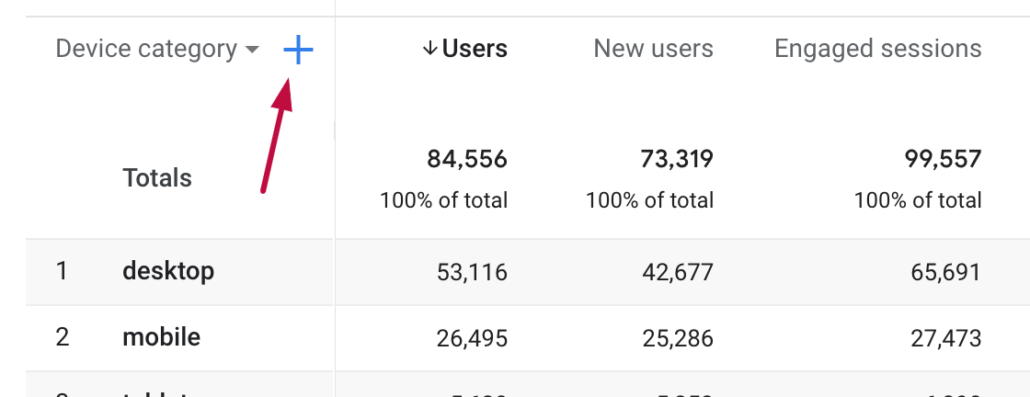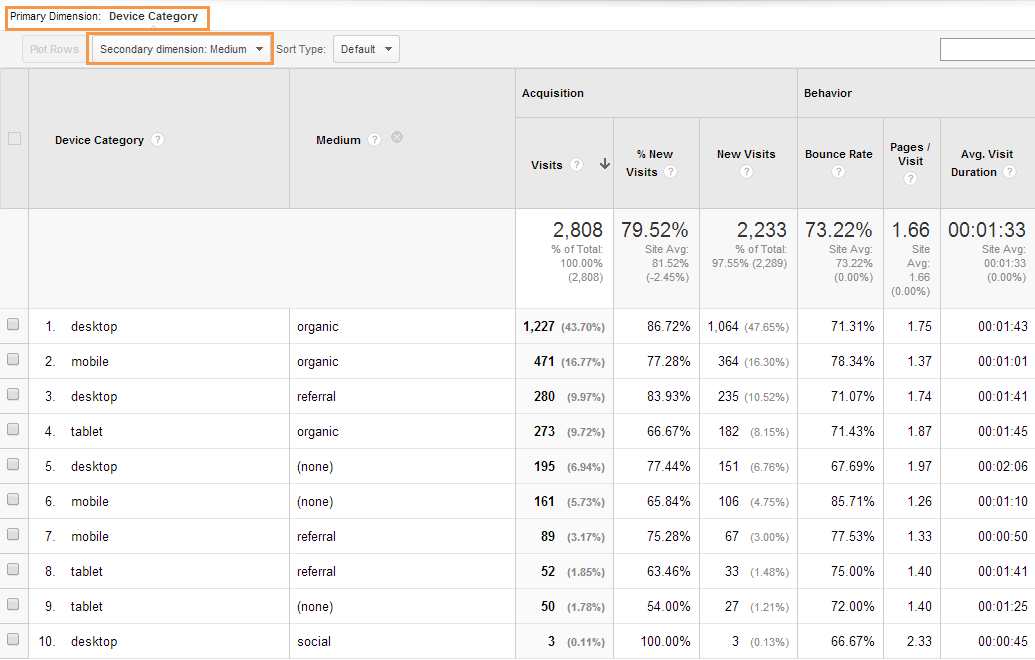Secondary Dimension in Google Analytics: Best Practices and Tips
Wiki Article
Unlock Deeper Insights With Second Measurement in Google Analytics
With the substantial area of information readily available in Google Analytics, the usage of secondary dimensions can substantially enhance your logical abilities. By purposefully integrating second dimensions into your analysis, you can uncover useful understandings that might or else continue to be obscure - Secondary Dimension in Google Analytics.Recognizing Main Vs. Second Dimensions
On the various other hand, additional dimensions allow you to additional study your main measurement data. By including a second dimension, you can layer on added info to your key dimension, allowing a much more granular evaluation. If your key dimension is the source/medium with which individuals showed up on your site, including a second dimension like geographical area can reveal where those users are located geographically.Making Use Of Second Measurements Properly
By including secondary measurements alongside main measurements, experts and marketers can dive much deeper into the specifics of customer communications on their websites. Secondary measurements permit customers to sector and filter primary measurement information further, supplying a more thorough sight of user communications, habits, and demographics.Moreover, additional measurements make it possible for individuals to compare and contrast different information factors within a single record, assisting in an extra detailed analysis of individual actions patterns. By leveraging additional dimensions successfully, organizations can uncover covert insights, maximize their marketing techniques, and boost the overall customer experience on their sites.
Exploring Typical Secondary Dimension Mixes
To better evaluate customer actions and patterns in Google Analytics, it is useful to check out usual combinations of secondary measurements. Some common additional measurement combinations that offer important insights include assessing website traffic resources with customer areas to understand where website visitors are coming from geographically and how they found the site. Taking a look at individual behavior metrics with second dimensions such as rate of interests or demographics can assist in targeting certain audience sectors extra properly.Applying Second Dimension in Customized Reports
Making use of second measurements in customized reports permits an extra extensive analysis of information in Google Analytics, improving the depth of insights acquired. When producing custom reports in Google Analytics, including additional dimensions can give an extra in-depth view of just how numerous measurements connect with each various other. This function allows individuals to dig check that much deeper right into their information and discover beneficial correlations that might not be quickly evident.By using additional measurements in customized reports, users can gain a better understanding of their internet site or app traffic. Incorporating the key dimension of "source/medium" with the secondary measurement of "landing page" can expose which landing web pages are doing ideal for website traffic coming from specific sources. This insight can aid marketers enhance their campaigns and boost total conversion rates.

Enhancing Data Visualization With Secondary Dimension
When discovering data in Google Analytics customized reports, integrating additional dimensions not only gives a much more thorough evaluation yet additionally enhances the graph of insights through data visualization. By adding a secondary content measurement to your records, you can enrich the way data exists, making it much easier to determine patterns, patterns, and relationships within your web site's efficiency metrics.Additional dimensions can aid you sector your data further, permitting a deeper understanding of user behavior and interactions on your site. This boosted level of granularity can be particularly beneficial when attempting to isolate particular variables that might influence your website's efficiency - Secondary Dimension in Google Analytics.

Verdict
In final thought, leveraging secondary dimensions in Google Analytics permits for a more extensive evaluation of data, leading to deeper understandings and more enlightened decision-making. Secondary Dimension in Google Analytics. By adding additional layers of details to key information sets, experts and marketing professionals can uncover concealed trends, patterns, and relationships that offer a granular sight of individual habits and communications. This enhanced degree of insight allows optimization of campaigns and tailored techniques for specific target market sectors, eventually improving performance and conversion ratesOn the various other view publisher site hand, additional dimensions enable you to further study your primary dimension data. By including a second dimension, you can layer on additional info to your main measurement, allowing a more granular analysis. If your key measurement is the source/medium via which customers got here on your website, adding a second measurement like geographic place can reveal where those users are located geographically. By incorporating secondary dimensions together with main measurements, online marketers and analysts can delve much deeper into the specifics of user communications on their sites. Additional measurements allow customers to section and filter primary measurement data further, supplying a more in-depth sight of user communications, habits, and demographics.
Report this wiki page